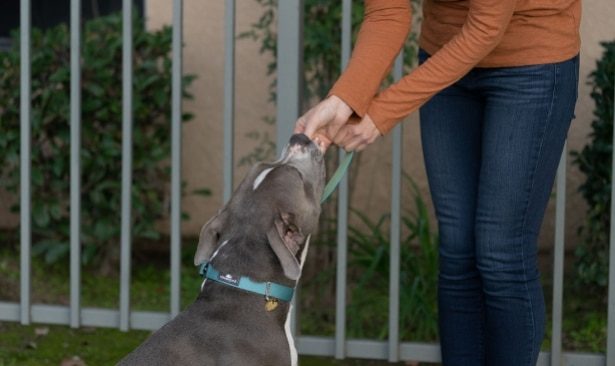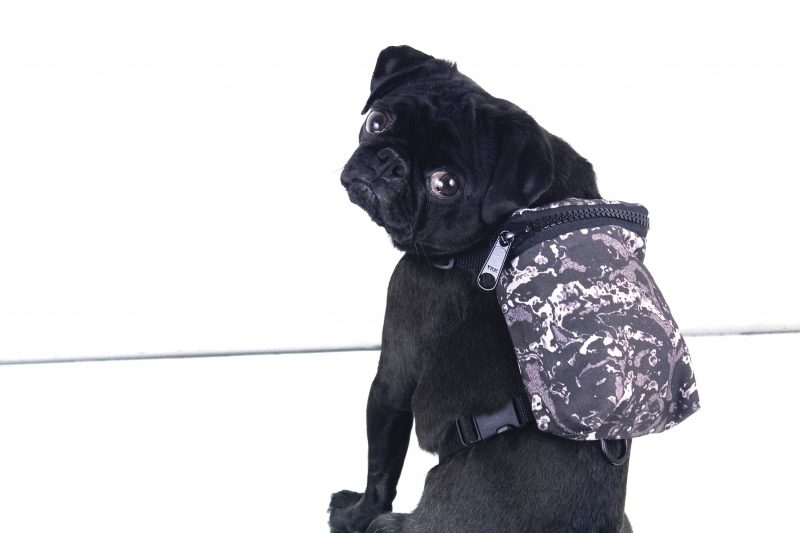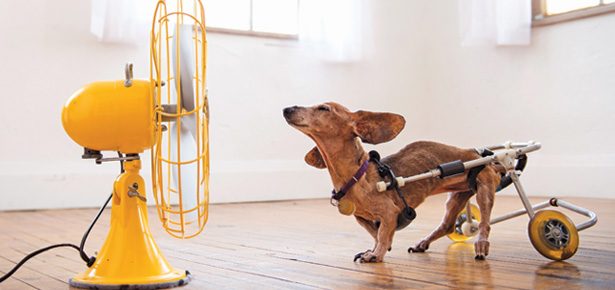

Choosing a Pet Sitter or Boarding Facility
How to find the right fit for your precious pooch
{ In partnership with SleepyPod }
Whether it’s for a day, a week, or longer, finding the perfect person or facility to entrust with your dog is vital to their well-being, as well as your peace of mind.
You should first consider what scenario is best suited for your individual dog. Seniors, young puppies, dogs with medical conditions, or those that are fearful or not well socialized are best left in their home environment with a professional pet sitter, or with a trusted, experienced friend or relative they are familiar with—in either your home or theirs.
However, if your dog is healthy, active, and social, you have the additional option of a boarding facility.
A great resource for finding recommendations in either category is to ask your veterinarian or trainer. You can also put the word out on your social media or neighborhood groups. Online resources such as Pet Sitters International is another option. Thoroughly read any provided information on each candidate to narrow down your list. The following tips can help you take further steps to ensure a good match.
CHOOSING A PET SITTER
• Start with a phone call. A simple conversation can tell you a lot about a potential pet sitter’s qualifications and personality, and whether you’ll feel comfortable having her in your home. Discuss her experience, training, references, and professional affiliations. Ask how much time she’ll be spending with your dog each day. A sitter who provides a written service agreement and questionnaire to learn details about your dog is preferable. Ideally, she should be bonded, insured, and trained in pet first aid.
• Arrange a visit. Invite the sitter to your home to introduce her to your dog and take her through the daily routine. Go for a short walk and review any commands, behavioral quirks, or issues the sitter should be aware of. Go over the dog’s feeding and potty schedule, house rules, and games/activities the dog enjoys. The more you can demonstrate how to maintain consistency in your dog’s routine, the greater chance your dog will be comfortable while you’re away. Don’t forget to review home logistics such as locks, gates, alarm, etc. Finally, discuss your expectations for checking in. A good sitter should be happy to provide daily texts and photos if that’s your preference.
• Be organized before your trip. Check that your dog’s collar and i.d. tags are secure. Prepare detailed, written instructions and include your itinerary, emergency contacts, vet info, and microchip details. Be sure you have an adequate supply of dog food, medications, and necessary supplies, such as a car harness or carrier if the sitter will be driving with your dog. A great choice for car travel gear is Sleepypod harnesses and carriers, which are certified crash-tested at the same standard set for child safety restraints. Confirm with the sitter the exact time she will begin and end her services, ensuring your safe arrival home.
• Have a backup plan. Arrange for a friend or neighbour to be your emergency backup, should the sitter have an unexpected illness or other emergency.
CHOOSING A BOARDING FACILITY
• Interview the staff. Is the facility run by experienced dog professionals? Ask about the training and skills of the employees, including whether they are trained in pet first aid.
• Expect high standards. To ensure they are friendly, healthy, and socialized, a reputable facility will want to arrange and meet-and-greet with your dog prior to their. Proof of up-to-date vaccines should be required, and you should be asked to provide information about your dog’s medical history, likes and dislikes, etc.
• Learn their safety policies. Is there someone on-site 24/7 in case of emergency? What are the procedures if your dog were to become ill or injured? Any staff member should readily answer basic safety questions.
• Observe the grounds and play surfaces. Many dogs have no experience with artificial grass, concrete, gravel, or other surfaces, and could have difficulty relieving themselves in certain areas.
• Ask about the play and exercise routine. How much play/exercise will your dog receive daily? If the facility is “cage-free” or has group play, is it continuously supervised? If your dog will be in a private kennel, how much time will they spend outside it each day? Will there be one-on-one playtime? How long will the daily walks be?
• Arrange a trial visit. Schedule a date to leave your dog for a short period prior to your trip to allow them to become familiar with the facility, see how they do, and address any potential issues that might arise.
• Supply your dog’s own food. Keeping your dog on their regular diet will help avoid any digestive upset.
• Understand the drop-off and pick-up policies. The last thing you want is any surprises on your day of departure or upon your arrival that might delay your anticipated canine reunion.
Finally, have a safe and enjoyable trip, knowing the best part will be coming home to your dog.
*Melanie Monteiro is a dog safety & lifestyle expert, pet first aid instructor, and author of “The Safe Dog Handbook” and “Waggish,” inspired by her adventures with Taiga, the world’s most accident-prone puppy
Join the newsletter and never miss out on dog content again!
"*" indicates required fields
By clicking the arrow, you agree to our web Terms of Use and Privacy & Cookie Policy. Easy unsubscribe links are provided in every email.





